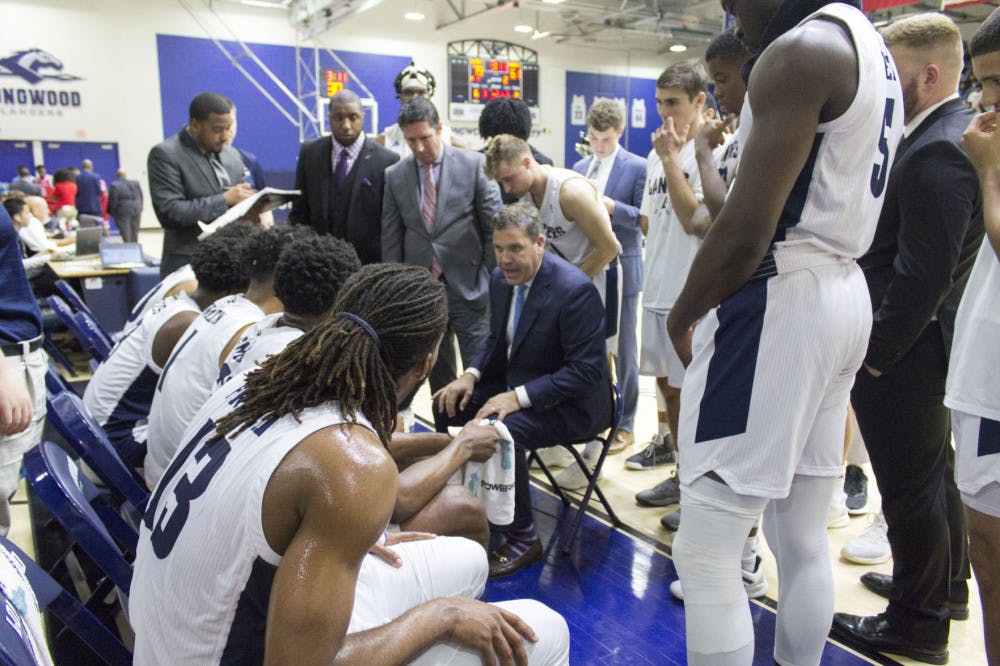The use of heart monitors before, during and after athletic events is a trend sweeping the landscape in both college and professional athletics to better monitor the health and well-being of students both on and off the field, according to Director for Sports Medicine Carly Fullerton.
Three different Longwood athletic programs currently use monitoring technologies from FirstBeat to track different health statistics while student-athletes are in action. Athletes wear the monitors during lifting, practice and games.
According to Fullerton, the statistics include Training Impulse (TRIMP) score, heart rates, workload amounts, recovery loads, among others.
Fullerton said a TRIMP score is on a scale of one to five and measures workload during a particular session.
“If we’re looking at a late recovery day, their TRIMP score should be in the ones," she said. "If we are seeing that they are in the fours and fives then we know that they are not recovered from the day before, and we know they aren’t getting maybe the most sleep or things like that.”
She continued, "There are still things that I don’t understand and I’ve been looking at it for quite a few years now.”
According to Fullerton, the FirstBeat system allows her to check athlete’s live statistics on her mobile device, and athletes can receive an email with their statistics to compare themselves with others on the team.
The three teams that currently use the monitors at Longwood are men’s basketball, field hockey and women’s soccer. The men’s soccer program used the monitors during the preseason practices which entailed heavy conditioning, but have since backed off on use.
For men’s basketball’s first-year head coach Griff Aldrich, reviewing the data received from the monitors on a daily basis has become a major priority.

Men’s Basketball head coach Griff Aldrich uses the statistics from the monitors on a daily basis to see overall output of athletes.
“It’s a tool to be able to evaluate the exertion level and the physical load level that each athlete is undergoing during an activity," Aldrich said. "It’s a great way for us to know where they are physically.”
Women’s soccer head coach Todd Dyer also uses the information from the heart monitors on a daily basis because it adds an element of accountability to student-athletes.
"They know that they are constantly being monitored, not that we want them working as hard as they can all the time," Dyer said. "Really being able to track the amount of work our athletes were doing on heavy practices, light practices, games and all of those things.”


According to Dyer, the main reason they use the monitors is to measure the workload of the team.
“After you play a game, you have a recovery day and then you start to build up again, but you need to rest before the next game," he said. "Basically we are trying to find that ‘ideal training rhythm’ for our team to make sure that we are putting in the right amount of work on the right days, but then also allowing them to recover either after a match, or get their legs back before a match.”
According to Fullerton, the ability to purchase the monitors comes from each teams allotted budget, and is not mandatory for use, but she would like to see more teams use the monitors.
“From a wellness stance and from a strength and conditioning stance it really works well for us to be able to see the information, and it’s nice for the coaches to be able to learn about it and see all the data points you can get from the machines every day,” Fullerton said.
According to Fullerton, player reaction to the monitors has been mixed.
“Especially for the male athlete, the biggest complaint is the band and the way it sits and where it sits, for a girl it’s fine because it sits right under a sports bra band, so it doesn’t affect you," she said. "For guys, they don’t have something holding it down, so you either have to make it tight enough where it will actually stay and sometimes it will rub, or it will start to slide as a player sweats.”
Each team that wears the monitors are in charge of keeping the bands properly sanitized.
“It’s all on the coaches. Lysol wipes or Lysol spray is fine, something like that, that’s going to be an antibacterial," Fullerton said. "The bands are kept in this thing that rolls out and has little pockets for each one to go in, and so you slide them in, and they are numbered, you roll it up, then it clips and slides into a bag. If you don’t clean them everything just grows.”
The heart rate monitors also assist with the draining, mental side of athletics, according to Fullerton.
“It’s been interesting watching it for some kids with the anxiety side of things. They’ll go all practice and never get in the red, and then all of the sudden you’ll put them up for a free throw and they jump to the red immediately,” said Fullerton.
Dyer is very excited about the possibilities that having the heart monitors, brings to his team, and wants to grow and learn more on ways they can be used.
He said, “It definitely helps us, and we’re just at the very beginning of what you are capable of doing with that (heart monitor) system. We are better off now than what we were before.”
Longwood Athletics uses monitoring systems from Firstbeat to track a multitude of real-time health statistics for its athletes.










